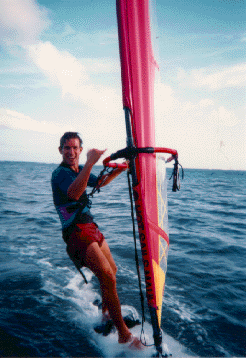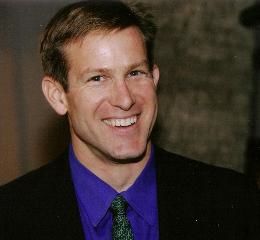

This homepage offers information about my:
Current Research and Interests
As a principal member of technical staff at Sandia National
Laboratories I work as principal investigator (PI) of research
projects involving large scale computer systems. Specific projects
included; Percival the design of a secure and robust long term
data archive based on secret splitting; RESAR the design and
emulation of a two failure tolerant, self-adjusting multi-million disk
storage cluster; Horus a method for fine grained encryption
based security for large-scale computing. Current research interests
include storage systems, IDS, network security, mobile computing and
large scale virtualization. In addition to research, I serve as part
of the operational cyber security and incident response team at Sandia
and am a member of the executive steering committee for the DOE
Network Security Monitoring professional group.
I defended my Ph.D. in March of 2000 in Computer Engineering at the
University of California at Santa
Cruz. Dissertation focused on on-line models to predict I/O system actions,
and improve I/O performance. We developed and patented efficient and
adaptable models to track file access patterns. These models were
prototyped in the linux kernel for use in prefetching.
My advisor was (and still is ;-) Professor Darrell D. E. Long
.
Background
I grew up in Shoreham NY a small town on the east end of Long Island
NY. I received my B.S.E degree in Computer Engineering from The University of Michigan. While an
undergraduate at Michigan I worked as a research assistant for Dr. Peter Honeyman at
the Center for Information
Technology Integration After graduation I was commissioned as an
officer in the The US Navy and
spent a year in San Diego at the Navy's Surface Warfare School (How
to drive a war ship school). From there I reported to the
In 1994 I moved from Hawaii to Santa Cruz, California to pursue a PhD in Computer Engineering. After defending my dissertation in 2000 I took a position with Network-Alchemy, a local start up. There we built network security devices (highly reliable VPNs). We were eventually purchased by Nokia. In 2002 I left Nokia and spent almost a year traveling Australia and the US. In November of 2002 some friends from Network-Alchemy and I founded Validus Medical System. We are developing a Computerized Physician Order Entry system.
In order to get more extensive file trace data I spent the Fall of 1998 working for Professor Satyanarayanan as a visting graduate student at Carnegie Mellon University. My time there was spent working with The Coda Project Traces, traces of system call activity on 33 different machines for the time span ranging from February 1991 to March 1993. Complete details of these traces are available at http://csl.cse.ucsc.edu/projects/DFSTrace.
Publications
My publications include:
Voice Recognition
Around winter '96 I ran into some difficulties with repetitive strain
injuries from typing. A voice dictation product for the PC called DragonDictate enabled me to
continue working while my hands heal. I used this product from June of
96 until December of 98, when I upgraded to the more current
continuous speech recognition product NaturallySpeaking, also from
Dragon Systems.
Using DragonDictate, I was able to produce a successful NSF grant
proposal, a research paper (including coding and running many
simulations and statistical tests) and a masters thesis. In short,
voice dictation worked quite well and at times can even be better than
typing. Several of my macro sets and
configuration files are publicly available.
I recently put in a bit of time to upgrade to the latest continuous speech recognition product NaturallySpeaking, which if you take the time to tune correctly is extremely impressive. I currently do all of my work from a Windows machine that is running NaturallySpeaking. From this machine I use either a telnet window (SecureCRT from Van Dyke Technologies Inc.) or Hummingbird's Exceed X server, to interact with the various other machines. Additionally, NT Emacs and Emacs on these remote machines is extremely helpful for the voice control. My NaturallySpeaking macros are available here.